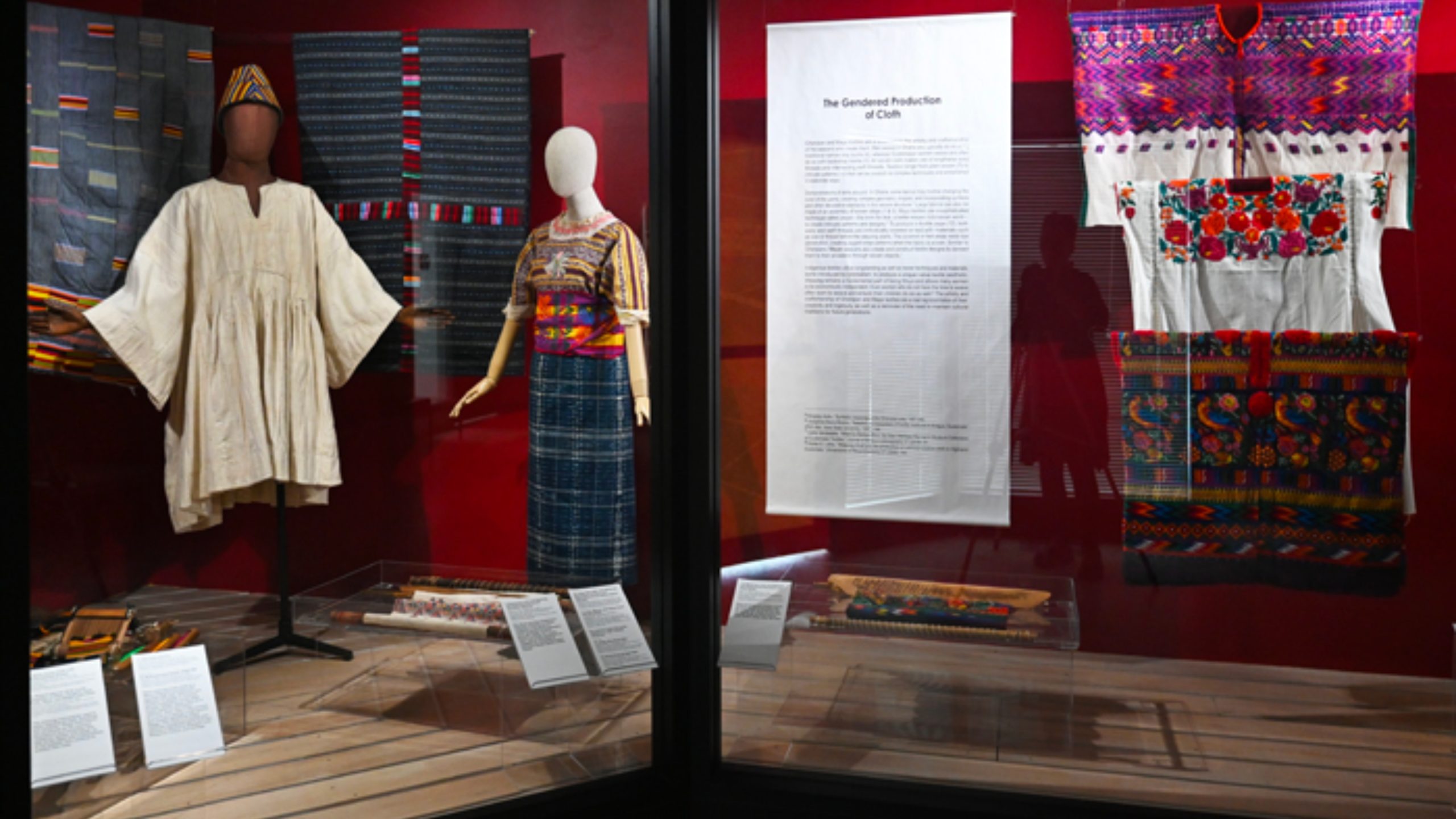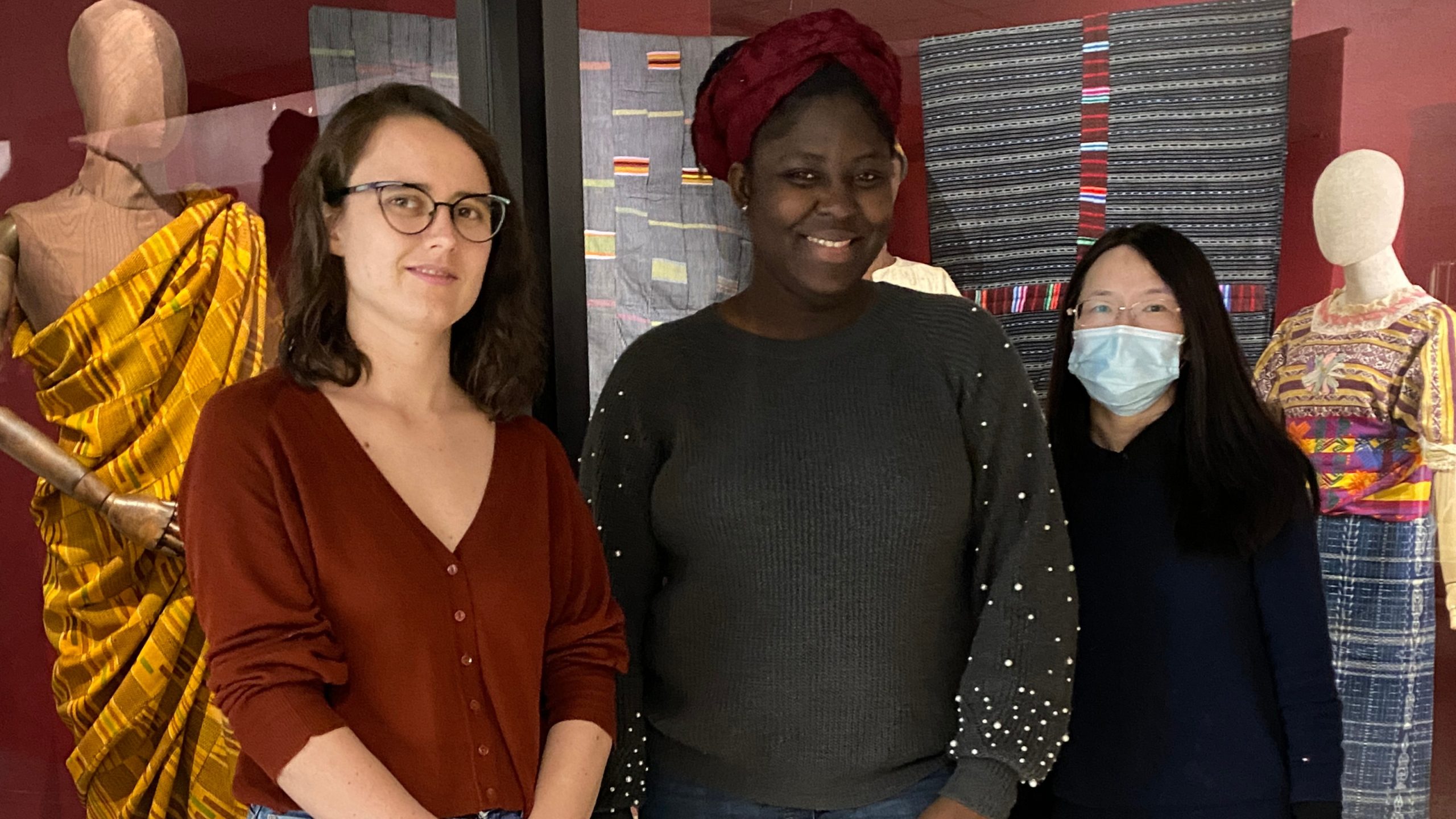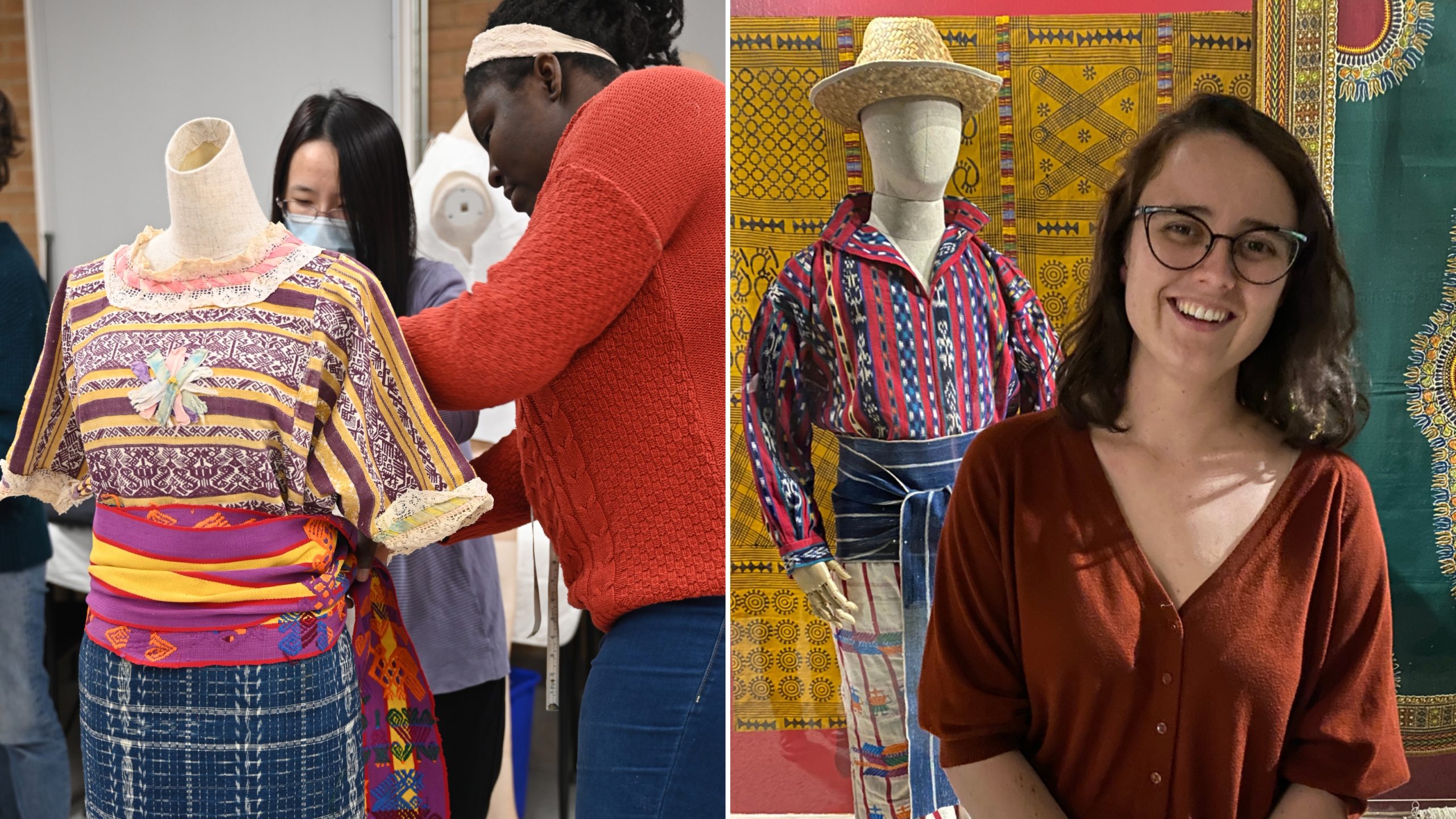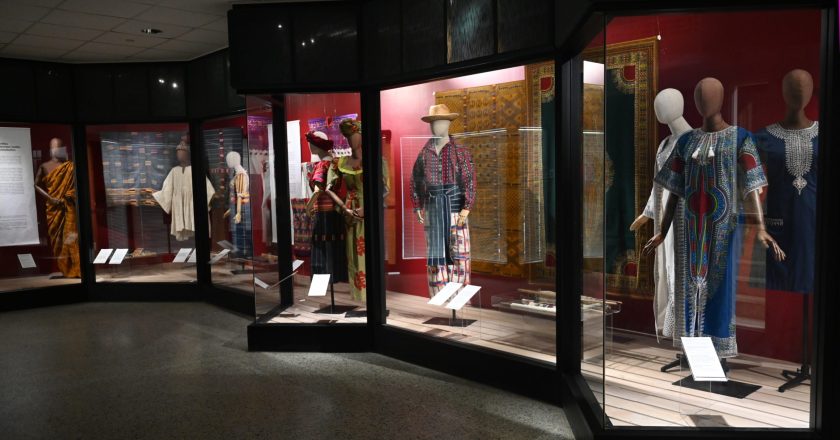‘Woven Identities’ is an exhibit that explores the intriguing patterns and unique motifs of Ghanaian and Guatemalan textiles and their cultural significance. Visit Woven Identities in person until March 1 at the Human Ecology Gallery on North Campus.
Throughout history, clothing, including the patterns, fabrics and techniques used, has served as a distinct form of cultural expression across the world. In ‘Woven Identities’, curators Siming Guo, Elsie Osei, Chiara Power and Anne Bissonnette explored two countries whose people have long expressed themselves through clothing and textiles: Ghana and Guatemala.
Textiles in Ghana and Guatemala
In this exhibit, walk through, explore and learn about the woven designs and processes developed by Ghanaians and the Indigenous Maya people of Guatemala. The exhibit demonstrates that despite being on opposite sides of the world, both countries’ strong weaving, printing and embroidering traditions have generated colourful, intricate textiles that are recognized worldwide.
The two styles of dress, as shared through the exhibit website, share a collective purpose: “Ghanaian textiles are remarkable with their unique motifs and patterns, which reflect the country’s Indigenous cultural heritage. With Maya textiles, while some of their visual elements could once be linked to a wearer’s location, age or gender, the broader use of traje — Maya traditional dress — now plays a part in Indigenous identity politics.”
“Interestingly, despite the apparent differences, cultures worldwide share striking similarities upon closer examination,” shared exhibit curator, Elsie Osei, MFA. “The world, in essence, operates as a global market, and the perceived distance between various cultures diminishes when scrutinized. It becomes evident that many cultures grapple with common influences, such as the effects of globalization, colonization and other shared experiences.”

Globalization and textiles
One focus for this exhibit is the impact of globalization: the curators highlight how Western gender standards have had a greater impact on the negative perception of men in traje as they do not conform to a somber vision of masculinity. Moreover, you can see the Kente cloth being worn across the world to signal African heritage.
Beyond cultural symbolism, new technologies have also been introduced — leading to the use of manufactured threads and synthetic dyes by Maya weavers as substitutes to natural yarns and dyes.
What’s next for the curation team and exhibit?
The exhibit, which opened April 12, 2023, comes to a close on March 1, 2024.
“Curating this exhibition proved to be an exhilarating experience for me,” Elsie commented. “I gained valuable insights throughout the process and cherished the camaraderie within the team. Being a proud Ghanaian, my passion for highlighting our rich culture and traditions found a meaningful outlet in this endeavour, marking a promising beginning.”



“Exploring the Anne Lambert Clothing and Textile Collection, analyzing and discussing the objects, and ‘dressing’ the mannequins were undeniably the highlights of my curation journey. The vast array of historic clothing and textiles within the collection was a captivating adventure, reminiscent of a child in a candy store,” Elsie said.
The graduate student co-curators of the exhibition: Chiara Power, Elsie Osei and Siming Guo
In May 2024, Chiara and Anne will travel to Washington, D.C., for a juried presentation on the exhibition at the Annual Symposium of the Costume Society of America (CSA).
Research for the design of the exhibition has also led to one juried paper written by Anne for Dress, the Costume Society of America scholarly journal. The article, ‘Increasing Mannequin Diversity in Museum Exhibitions to Address Social Justice…’ discusses how — for far too long — museums have used thin, white mannequins as the standard for body surrogates in dress and textiles exhibitions.
Along with a brief summary of the practice, the paper offers alternatives called ‘The Forest People’ that aims to address issues of equity, diversity and inclusion in curatorial and display practices by making or covering mannequins in an array of wood colors and textures to simulate the diversity of skin tones.

